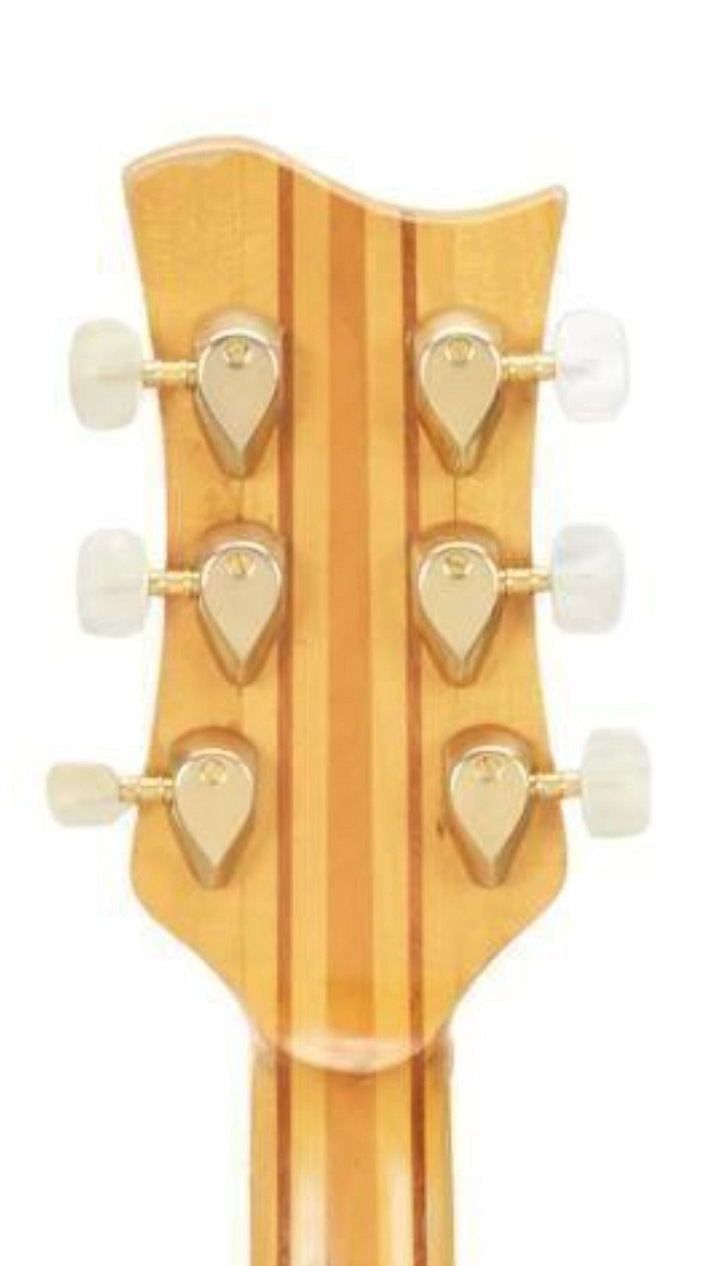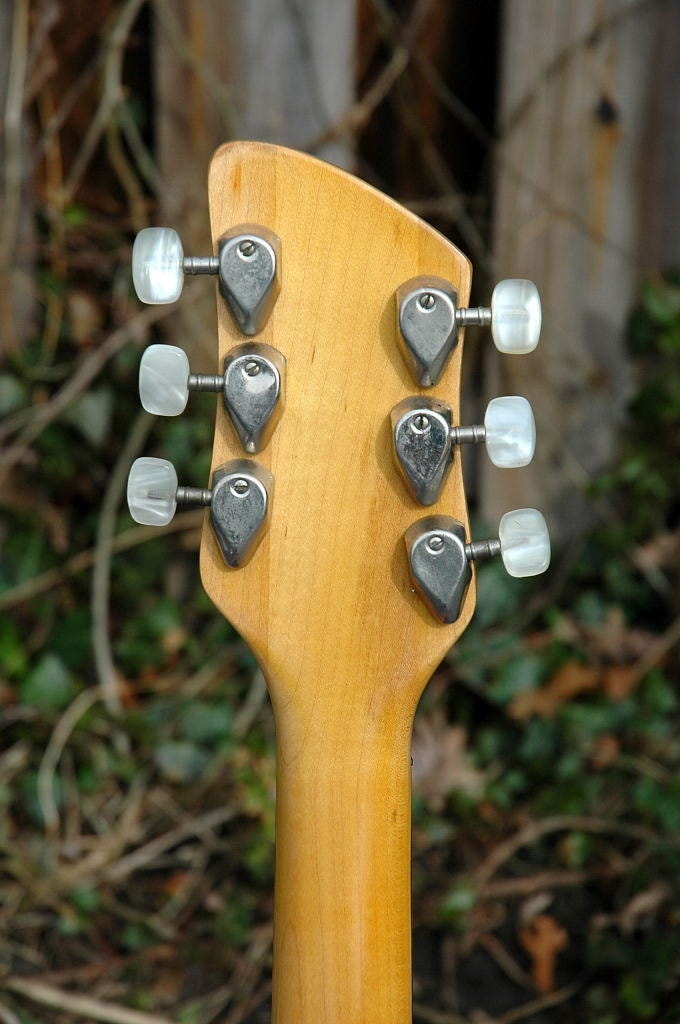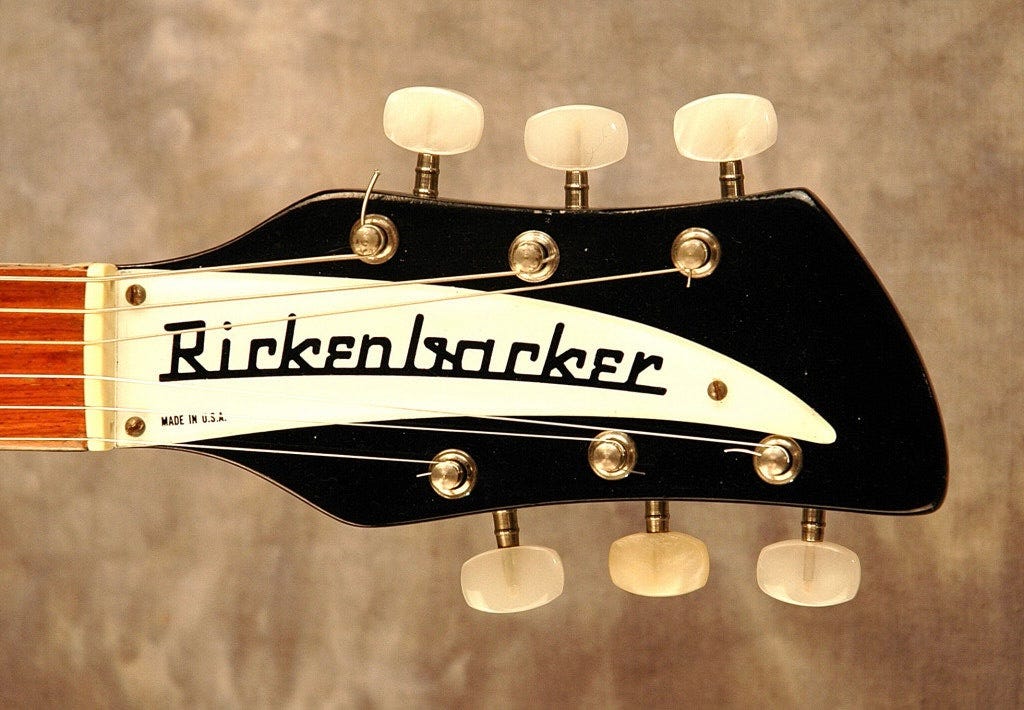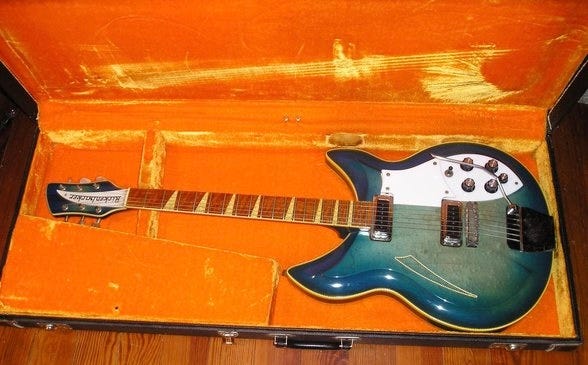Terminology: Van Ghent Tuners
So what are Van Ghent tuners, when did Rickenbacker use them, why did they use them, and where did the “h” in Ghent come from/go to? I promise that last question will make sense when we’re done!
Let’s start there, in fact. Van Gent (no “h”) B.V. is a Dutch manufacturer of stringed instrument hardware—primarily tuning machines and fret wire—founded in 1949 in the Netherlands by “the brothers van Gent”. The business has remained in family hands since its founding, and specializes in vintage style open gear tuners—much like their original offerings from the early 1950s.

Their current products are fairly well regarded in the reproduction market, and are surprisingly inexpensive for being European-made. They do not appear to currently have U.S. distribution.
But from the 1950s to the early 1970s Van Gent was a major supplier to European guitar brands like Hagstrom, Burns, Hofner, and Vox. They also appeared on guitars by U.S. manufacturers like Guild, Rickenbacker, and especially Gretsch.
So what happened to them? Well, much like Kluson they didn’t keep up with the times. Companies like Grover and Schaller were advancing tuner capabilities, and Van Gent was…making the same old tuners they always had. By the end of the 1970s they had almost no new electric guitar fitments, and none in the U.S.. While documentation is very hard to find, it’s pretty clear that the company today is a shell of what it once was.
So what’s the story with the “H”? It’s a mystery. These facts we know to be true: the company has always been Van Gent. Today’s products are marketed as Van Gent. But period literature from the 1960s clearly refers to the tuners as Van Ghents. Why? For how long? I did a pretty deep dive, and I’ve got nothing!
So when and why did they end up on Rickenbackers? As near as I can tell they first showed up on two different 385 acoustic models Roger Rossemiesl built in 1961. I’m struggling to find good photos, but you’re probably most familiar with the “fish tail/steer’s head” version:


As to why…well, we can’t be completely sure. We know that Roger’s father Wenzel had used Van Ghents on his “Roger” guitars, so Rossmeisl was almost certainly aware of their existence.


So take that and the fact that Van Ghent offered fancy pearloid buttons that would look nice on his fancy acoustics…that makes as much sense as anything else.
The actual “model number” Rickenbacker used is lost to time, but in general they can be described as featuring pearloid buttons and a teardrop back as shown below:


The teardrop backs are cosmetic only—removing the screw that holds them on reveals a basic open gear assembly. Being candid, they’re not great tuners. But they look fancy!
They started showing up on “production” models in 1963–like the 460 example above. It appears that they were used primarily on “special” production items—things like custom orders, trade show models, prototypes, and the like where appearance was more important than performance. While this is supposition, it is strongly backed up by the “physical record”.

That’s not to say they weren’t grabbed off the shelf when nothing else was available—especially in the 1964-1965 period when demand exploded. But in general, they were for “special” use.

Use dropped way off after 1965, but they occasionally popped up afterwards. The last use I have found dates to 1972, but there may be more after that!

And that’s all I know about Van G(h)ent tuners. The lack of an answer around the “H” question is frustrating, but I exhausted all my skills trying to find one. If you have it, please share!


Long live VG tuners!
Minor, but the Roger pictured has Kolb tuners... Kind of a grainy shot, but the Roger VG's have round/oval buttons and the distinctive Roger 'shaft hump' (2 visible bands on the the back view, 1 visible band from the front - same shafts as RIC used, but w/ oval buttons). The Roger VG's were for the higher-end models, usually on the Super, not the Junior/electric. If you want some hi-res photos of VGs (not mounted to a guitar) lmk...